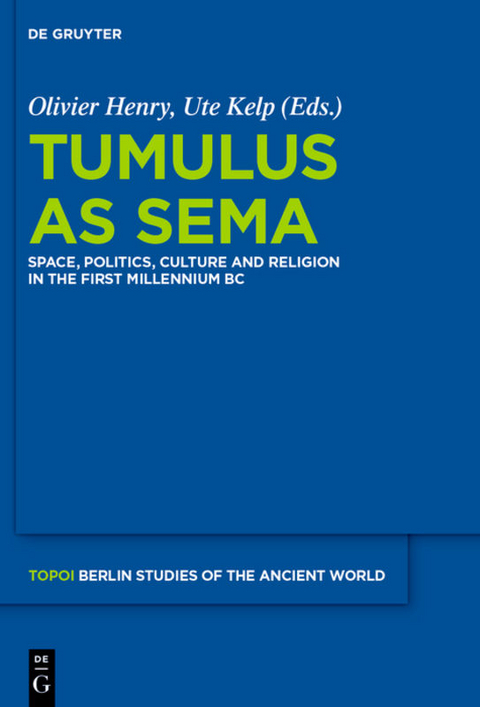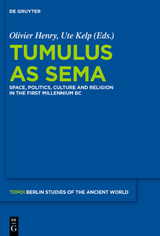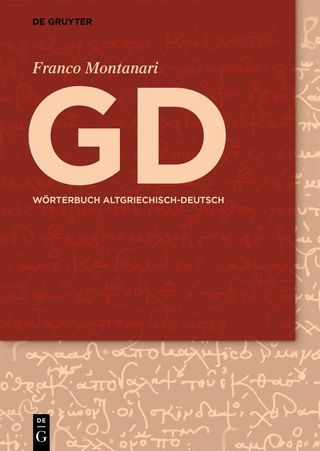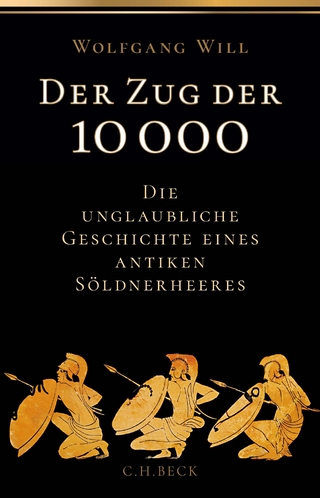Tumulus as Sema
Space, Politics, Culture and Religion in the First Millennium BC
Seiten
2016
De Gruyter (Verlag)
978-3-11-025990-2 (ISBN)
De Gruyter (Verlag)
978-3-11-025990-2 (ISBN)
Die Reihe Topoi. Berliner Studien der Alten Welt versammelt Beiträge aus allen altertumswissenschaftlichen Disziplinen, von der Ur- und Frühgeschichte über die Klassische Archäologie bis zur antiken Philosophie, Wissenschaftstheorie und Theologie. Einen Schwerpunkt bilden Monographien und Sammelbände, in denen die Forschungsergebnisse des Exzellenzclusters Topoi vorgestellt werden. Weitere Schwerpunkte sind in Planung.
Tumuli were the most widespread form of monumental tombs in the ancient world. Their impact on landscape, their allurement as well as their symbolic reference to a glorious past can still be felt today. The need of supra-regional and cross-disciplinary examination of this unique phenomenon led to an international conference in Istanbul in 2009. With almost 50 scholars from 12 different countries participating, the conference entitled TumulIstanbul created links between fields of research which would not have had the opportunity to meet otherwise. The proceedings of TumulIstanbul revolve around the question of the symbolic significance of burial mounds in the 1st millennium BC in the Eastern Mediterranean and Black-Sea regions, providing further insight into Kurgan neighbours from Eurasia.
Tumuli were the most widespread form of monumental tombs in the ancient world. Their impact on landscape, their allurement as well as their symbolic reference to a glorious past can still be felt today. The need of supra-regional and cross-disciplinary examination of this unique phenomenon led to an international conference in Istanbul in 2009. With almost 50 scholars from 12 different countries participating, the conference entitled TumulIstanbul created links between fields of research which would not have had the opportunity to meet otherwise. The proceedings of TumulIstanbul revolve around the question of the symbolic significance of burial mounds in the 1st millennium BC in the Eastern Mediterranean and Black-Sea regions, providing further insight into Kurgan neighbours from Eurasia.
Olivier Henry, Institut Français d'Etudes Anatoliennes (IFEA), Istanbul, Turkey; Ute Kelp, University Cologne, Germany.
"The text is accompanied by a separate volume of full-colour plates, making them easy to consult in tandem. [...] It is completed by helpful indices of names, places, tumulus names, and ancient sources. [...] this is a fabulous volume, and will be a crucial addition to any serious archaeology collection."
Naoise Mac Sweeny in: Journal of Greek Archaeology 2 (2017), 461-464
| Erscheint lt. Verlag | 22.2.2016 |
|---|---|
| Reihe/Serie | Topoi – Berlin Studies of the Ancient World/Topoi – Berliner Studien der Alten Welt ; 27 |
| Zusatzinfo | 580 b/w and 120 col. ill. |
| Verlagsort | Berlin/Boston |
| Sprache | englisch |
| Maße | 170 x 240 mm |
| Gewicht | 3160 g |
| Themenwelt | Geschichte ► Allgemeine Geschichte ► Altertum / Antike |
| Geschichte ► Hilfswissenschaften ► Paläografie | |
| Schlagworte | 1. Jahrtausend (v.u.Z.) • Black Sea Region • Eastern Mediterranean • Hügelgräber • Östlicher Mittelmeerraum • Schwarzes Meer • Tumuli Tombs • Tumuli Tombs; Eastern Mediterranean; Black Sea Region |
| ISBN-10 | 3-11-025990-7 / 3110259907 |
| ISBN-13 | 978-3-11-025990-2 / 9783110259902 |
| Zustand | Neuware |
| Haben Sie eine Frage zum Produkt? |
Mehr entdecken
aus dem Bereich
aus dem Bereich
Die unglaubliche Geschichte eines antiken Söldnerheeres
Buch | Hardcover (2022)
C.H.Beck (Verlag)
28,00 €
die Inszenierung der Politik in der römischen Republik
Buch | Hardcover (2023)
C.H.Beck (Verlag)
48,00 €




